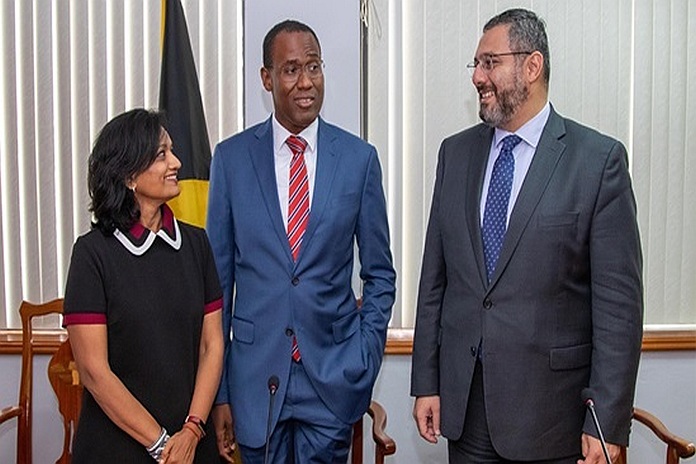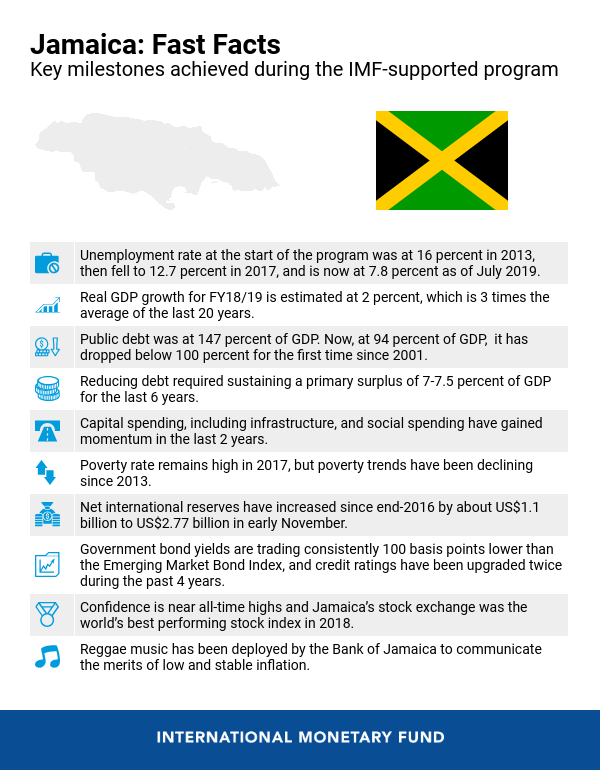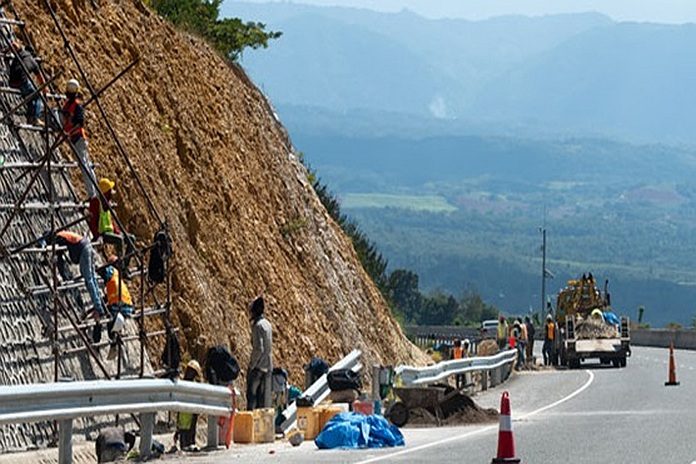KINGSTON, Jamaica – Jamaica has successfully concluded its economic reform program, which was supported by a US$1.66 billion Stand-By Arrangement from the International Monetary Fund (IMF). The country’s strong ownership, as well as the government’s steadfast reform implementation, have resulted in a stronger economy, an all-time low unemployment rate, and a significant reduction in public debt.
In an interview with Uma Ramakrishnan, former head of the IMF team for Jamaica, we discuss the history, evolution, and achievements of the recently concluded program.
How would you describe Jamaica’s economy before the program?
Prior to the IMF- supported programs, Jamaica’s economy suffered from years of very low growth. This was combined with a high and unsustainable public debt of about 145 percent of GDP, which was accumulated over several decades of weak policy implementation.
High borrowing needs to finance public debt led to financial repression, the use of various measures to channel funds to the government and crowded out private sector credit and investment. This high debt servicing costs limited room in the government’s budget and inhibited spending on the critical needs of the Jamaican people, like infrastructure and social assistance. A weak external position was reflected in a current account deficit of around 12 percent of GDP, and low net international reserves of around US$0.9 billion in 2012.

(From left to right: Former IMF Mission Chief for Jamaica, Uma Ramakrishnan; Jamaica’s Finance Minister, Nigel Clarke; and IMF resident representative, Karim Youssef)
And how is Jamaica’s economy now?
The key goals under the two successive IMF-supported programs were to restore economic stability while pursuing policies that will provide a long-term foundation to sustain growth, create jobs, and protect the most vulnerable. Since the start of the 2013 Extended Fund Facility and the subsequent precautionary Stand-By Arrangement in 2016, Jamaica’s public debt has fallen by about 50 percent of GDP and is on track to reach the legislated 60 percent of GDP target by FY25/26.
The unemployment rate at about 7.8 percent is at an all-time low. Both the current account deficit and inflation are subdued, and foreign reserves have been rebuilt to comfortable levels. In addition, monetary policy is on track to bring inflation to the mid-point of the Bank of Jamaica’s target band. Growth has improved supported by mining, construction, and agriculture industries but the outlook is weaker than envisioned at the start of the programs, and poverty remains high.
To follow up, now that the program has ended, is there a risk that remaining reforms will go unfinished?
We are confident that there is still momentum and commitment to continue reforms in several key areas to support broad-based and higher growth. This includes completing the work on building domestic institutions, such as a fiscal council, an independent central bank, a disaster financing policy framework, and a well-functioning governance framework for public bodies.
Moreover, a meaningful transformation of the public sector that prioritizes government functions and redesigns public sector compensation needs to be at the top of the government’s agenda. This should help create room for fiscal policy to tackle growth impediments such as the large infrastructure and skills gap; high crime; low financial access and inclusion; and an inadequate social safety net.
Can you talk more about what contributed to the program’s successful completion?
A big reason for the success of the economic reform program in Jamaica resulted from the power of ownership. For instance, there was strong bipartisan support for fiscal discipline, and the social consensus to sustain it. Various stakeholders, for example, private and public sectors, civil society, unions got behind the reforms across two administrations.
That social partnership for change and the championing and monitoring of reform commitments by the Economic Programme Oversight Committee (EPOC) was a critical force, which will need to continue to tackle the deep-rooted structural issues. In addition, phasing-in difficult reforms were critical (for example, the switch from direct to indirect taxes, increasing public employees’ pension contributions, and central bank recapitalization were all done over multiple years).
Going forward, how do you see the partnership between Jamaica and the IMF evolving?
First and foremost, the strong partnership between Jamaica and the Fund will continue through our regular economic health checks and capacity development that is well-tailored for Jamaica, as it was under the program. More specifically, technical assistance to support economic and fiscal capacity building, foreign exchange and capital market development, and risk-based supervision are ongoing. Jamaica’s resident representative’s office will also remain open for two additional years to help coordinate these efforts and ensure that the authorities’ needs are being met.






